This story was produced by The Hechinger Report, a nonprofit, nonpartisan news outlet focused on education.
At the end of a semester that presaged one of the hottest summers on record, the students in Associate Professor Michael Sheridan’s business class were pitching proposals to cut waste and emissions on their campus and help turn it into a vehicle for fighting climate change.
Flanking a giant whiteboard at the front of the classroom, members of the team campaigning to build a solar canopy on a SUNY New Paltz parking lot delivered their pitch. The sunbaked lot near the athletic center was an ideal spot for a shaded solar panel structure, they said, a conduit for solar energy that could curb the campus’s reliance on natural gas.
The project would require $43,613 in startup money. It would be profitable within roughly five years, the students said. And over 50 years, it would save the university $787,130 in energy costs.
“Solar canopies have worked for other universities, including other SUNY schools,” said Ian Lominski, a graduating senior who said he hopes to one day work for the New York State Department of Environmental Conservation. “It’s well within the realm of possibility for SUNY New Paltz.”
Sheridan’s course is an example of an approach known as “campus as a living lab,” which seeks to simultaneously educate students and reduce the carbon footprint of college campuses. Over the past decade, a growing number of professors in fields as diverse as business, English and the performing arts have integrated their teaching with efforts to minimize their campuses’ waste and emissions, at a time when human-created climate change is fueling dangerous weather and making life on Earth increasingly unstable.
Engineering students have helped retrofit buildings. Theater students have produced no-waste productions. Ecology students have restored campus wetlands. Architecture students have modeled campus buildings’ airflow and worked to improve their energy efficiency. The efforts are so diverse that it’s difficult to get a complete count of them, but they’ve popped up on hundreds of campuses around the country.
“I think it’s a very, very positive step,” said Bryan Alexander, a senior scholar at Georgetown University and author of the book Universities on Fire: Higher Education in the Climate Crisis. “You’ve got the campus materials, you’ve got the integration of teaching and research, which we claim to value, and it’s also really good for students in a few ways,” including by helping them take action on climate in ways that can improve mental health.
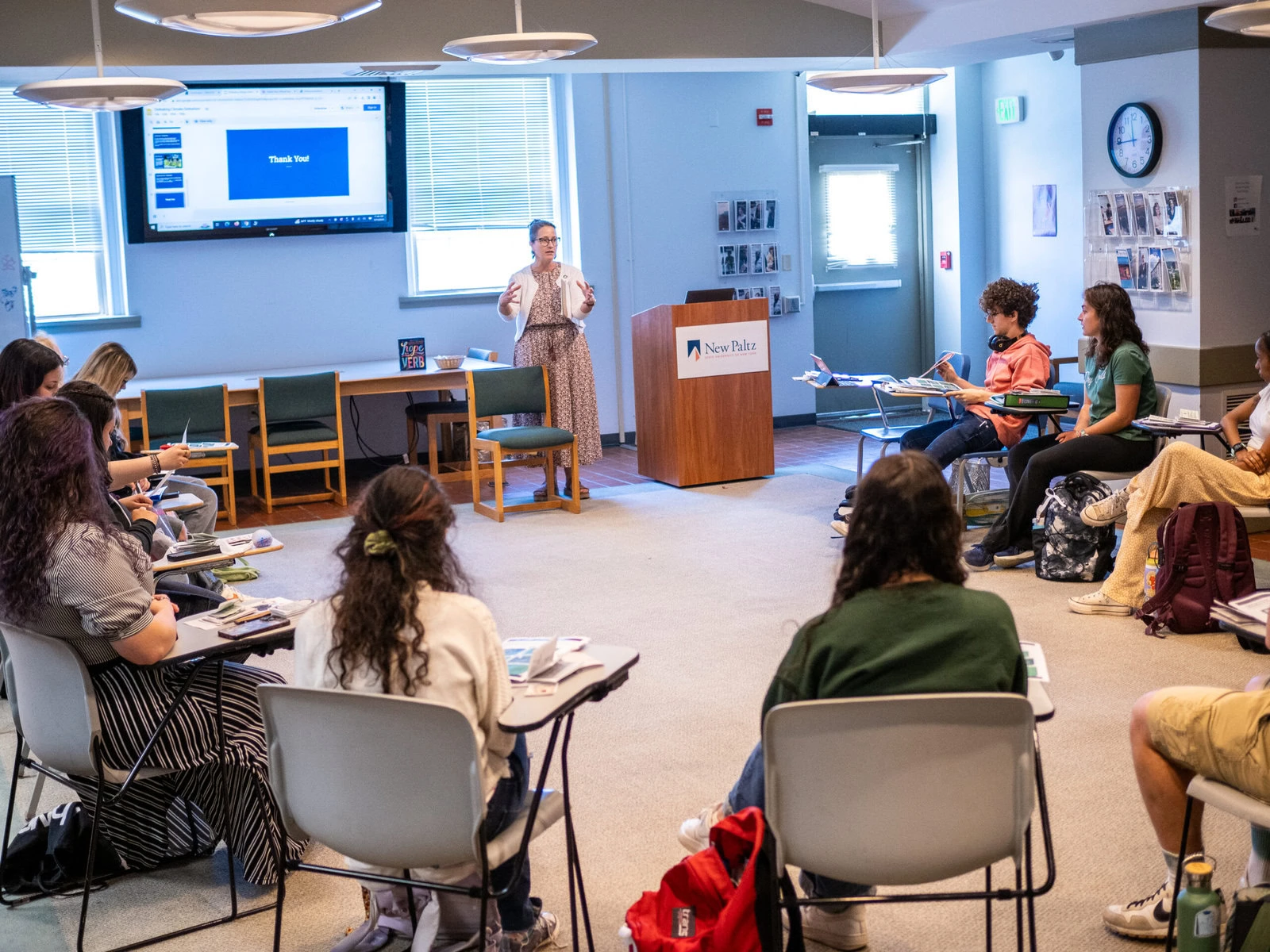
That said, the work faces difficulties, among them that courses typically last only a semester, making it hard to maintain projects. But academics and experts see promising results: Students learn practical skills in a real-world context, and their projects provide vivid examples to help educate entire campuses and communities about solutions to alleviate climate change.
From the food waste students and staff produce, to emissions from commuting to campus and flying to conferences, to the energy needed to power campus buildings, higher education has a significant climate footprint. In New York, buildings are among the single largest sources of carbon emissions — and the State University of New York system owns a whopping 40 percent of the state’s public buildings.
About 15 years ago, college leaders began adding “sustainability officers” to their payrolls and signing commitments to achieve carbon neutrality. But only a dozen of the 400 institutions that signed on have achieved net-zero emissions to date, according to Bridget Flynn, senior manager of climate programs with the nonprofit Second Nature, which runs the network of universities committed to decarbonizing. (The SUNY system has a goal of achieving net-zero emissions by 2045, per its chancellor, John B. King Jr.)
Crushed by negative news?
Sign up for the Reasons to be Cheerful newsletter.
Campus sustainability efforts have faced hurdles including politics and declining enrollment and revenue, say experts. “Higher ed is in crisis and institutions are so concerned about keeping their doors open, and sustainability is seen as nice to have instead of essential,” said Meghan Fay Zahniser, who leads the Association for the Advancement of Sustainability in Higher Education.
But there’s change happening on some campuses, she and others noted. At Dickinson College, in Pennsylvania, a net-zero campus since 2020, students in statistics classes have run data analyses to assess why certain buildings are less efficient than others. Psychology students studying behavior change helped the campus dining hall adopt a practice of offering half, full and double portions to cut down on food waste. Physics students designed solar thermal boxes to boost renewable biogas production on an organic farm owned by the college.
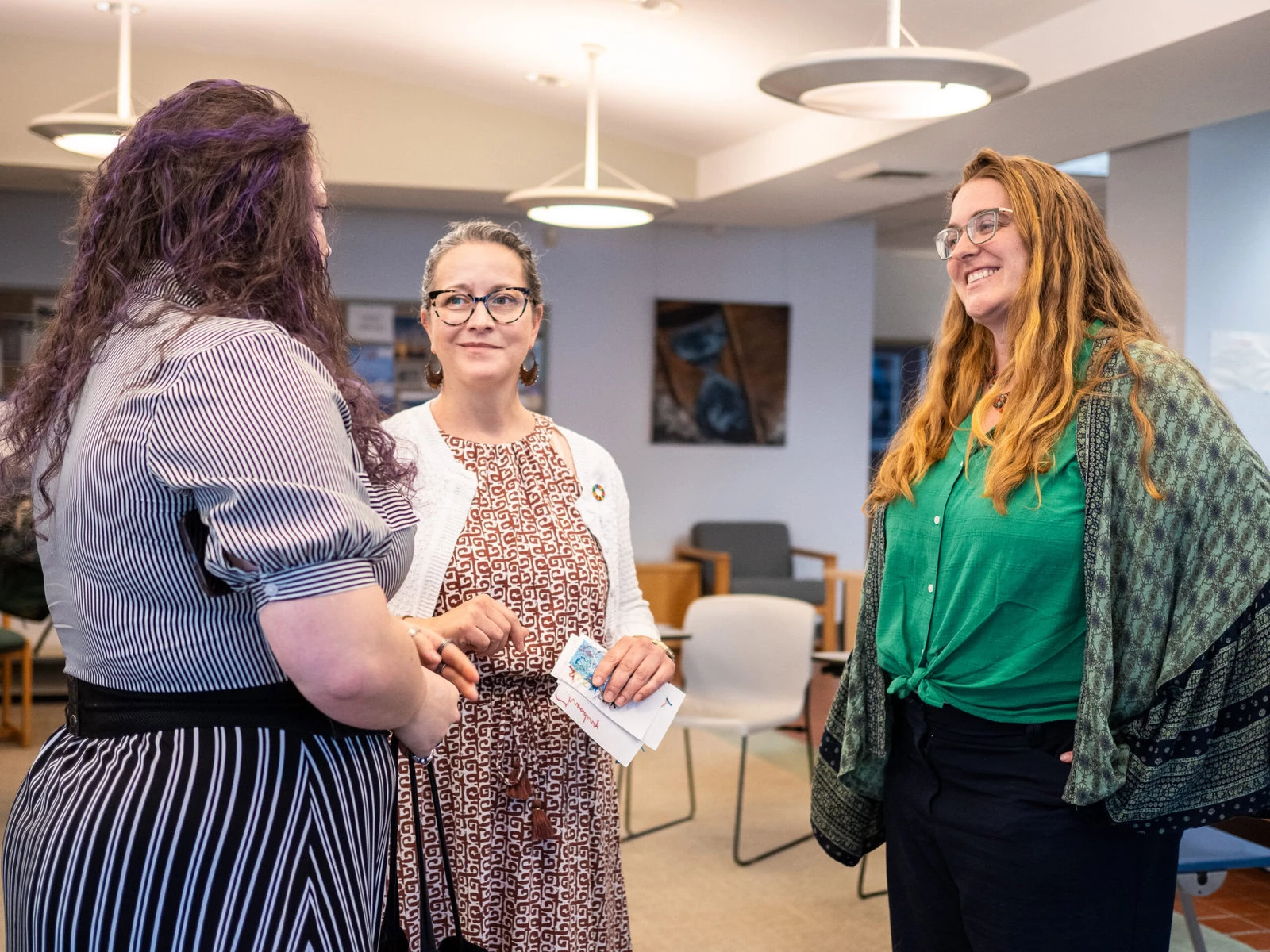
Neil Leary, associate provost and director of the college’s Center for Sustainability Education, teaches classes in sustainability. Last fall’s students analyzed climate risks and resilience strategies for the campus and its surrounding county and then ran a workshop for community members. Among the recommendations emerging from the class: that athletic coaches and facilities staff receive training on heat-related health risks.
Similarly, at SUNY Binghamton, Pamela Mischen, chief sustainability officer and an environmental studies professor, teaches a course called Planning the Sustainable University. Her students, who come from majors including environmental studies, engineering and pre-law, have helped develop campus green purchasing systems, started a student-run community garden and improved reuse rates for classroom furniture.
And across the country, at Weber State University in Utah, students have joined the campus’s push toward renewable energy. Engineering students, for example, helped build a solar-powered charging station on a picnic table. A professor in the school’s construction and building sciences program led students in designing and building a net-zero house.
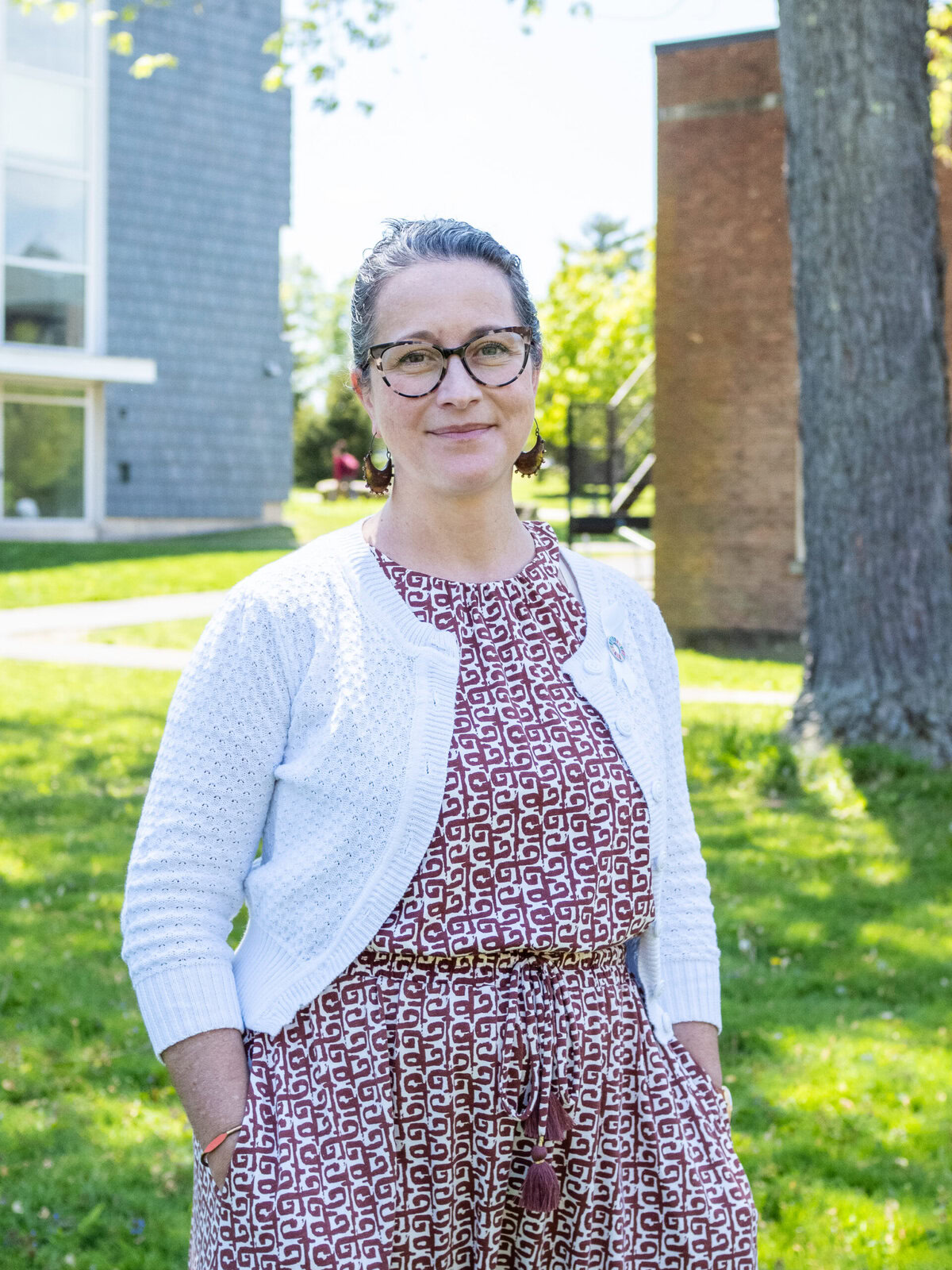
On the leafy SUNY New Paltz campus about 80 miles north of Manhattan, campus sustainability coordinator Lisa Mitten has spent more than a decade working to reduce the university’s environmental toll. Among the projects she runs is a sustainability faculty fellows program that helps professors incorporate climate action into their instruction.
One day this May, Andrea Varga, an associate professor of theatre design and a sustainability fellow, listened as the students in her honors Ethical Fashion class presented their final projects. Varga’s class covers the environmental harms of the global fashion industry (research suggests it is responsible for at least four percent of greenhouse emissions worldwide, or roughly the total emissions of Germany, France and the United Kingdom combined). For their presentations, her students had developed ideas for reducing fashion’s toll, on the campus and beyond, by promoting thrifting, starting “clothes repair cafes” and more.
Jazmyne Daily-Simpson, a student from Long Island scheduled to graduate in 2025, discussed expanding a project started a few years earlier by a former student, Roy Ludwig, to add microplastic filters to more campus washing machines. In a basement laundry room in Daily-Simpson’s dorm, two washers are rigged with the contraptions, which gradually accumulate a goopy film as they trap the microplastic particles and keep them from entering the water supply.
Ludwig, a 2022 graduate who now teaches Earth Science at Arlington High School about 20 miles from New Paltz, took Varga’s class and worked with her on an honors project to research and install the filters. A geology major, he’d been shocked that it took a fashion class to introduce him to the harms of microplastics, which are found in seafood, breast milk, semen and much more. “It’s an invisible problem that not everyone is thinking about,” he said. “You can notice a water bottle floating in a river. You can’t notice microplastics.”
Around campus, there are other signs of the living lab model. Students in an economics class filled the entryway of a library with posters on topics such as the lack of public walking paths and bike lanes in the surrounding county and inadequate waste disposal in New York State. A garden started by sculpture and printmaking professors serves as a space for students to learn about plants used to make natural dyes that don’t pollute the environment.
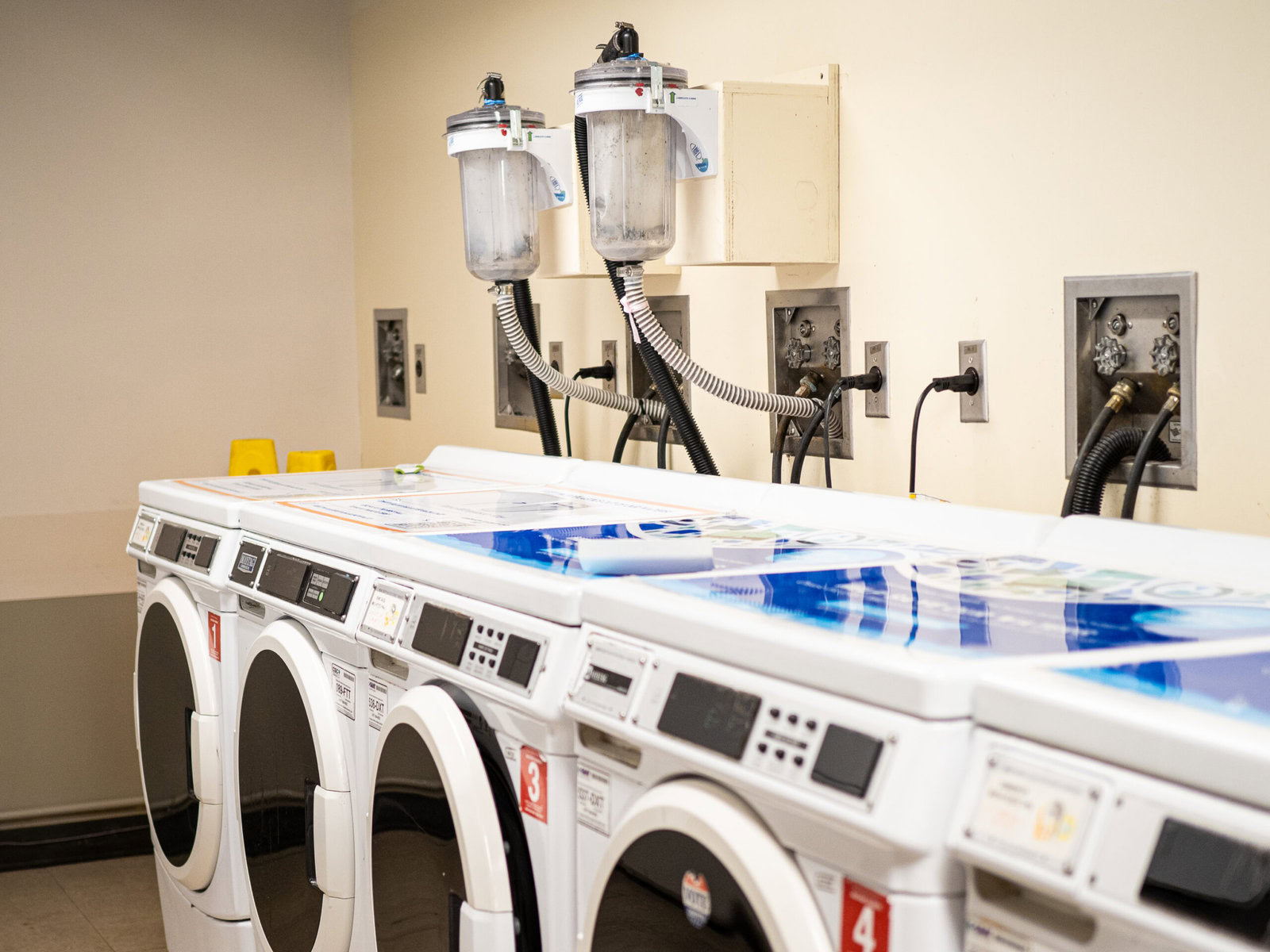
In the business school classroom, Sheridan, the associate professor, had kicked off the student presentations by explaining to an audience that included campus facilities managers and local green business leaders how the course, called Introduction to Managing Sustainability, originated when grad students pitched the idea in 2015. The projects are powered by a “green revolving fund,” which accumulates money from cost savings created by past projects, such as reusable to-go containers and LED lightbulbs in campus buildings. Currently the fund has about $30,000.
“This class has two overarching goals,” said Sheridan, who studied anthropology and sustainable development as an undergraduate before pursuing a doctorate in business. The first is to localize the United Nations global goals for advancing sustainability, he said, and the second is “to prove that sustainability initiatives can be a driver for economic growth.”
In addition to the solar canopy project, students presented proposals for developing a reusable water bottle program, creating a composter and garden, digitizing dining hall receipts and organizing a bikeshare. They gamely fielded questions from the audience, many of whom had served as mentors on their projects.
Jonathan Garcia, a third-year business management major on the composting team, said later that he’d learned an unexpected skill: how to deal with uncooperative colleagues. “We had an issue with one of our teammates who just never showed up, so I had to manage that, and then people elected me leader of the group,” he said later. “I learned a lot of team-management skills.”
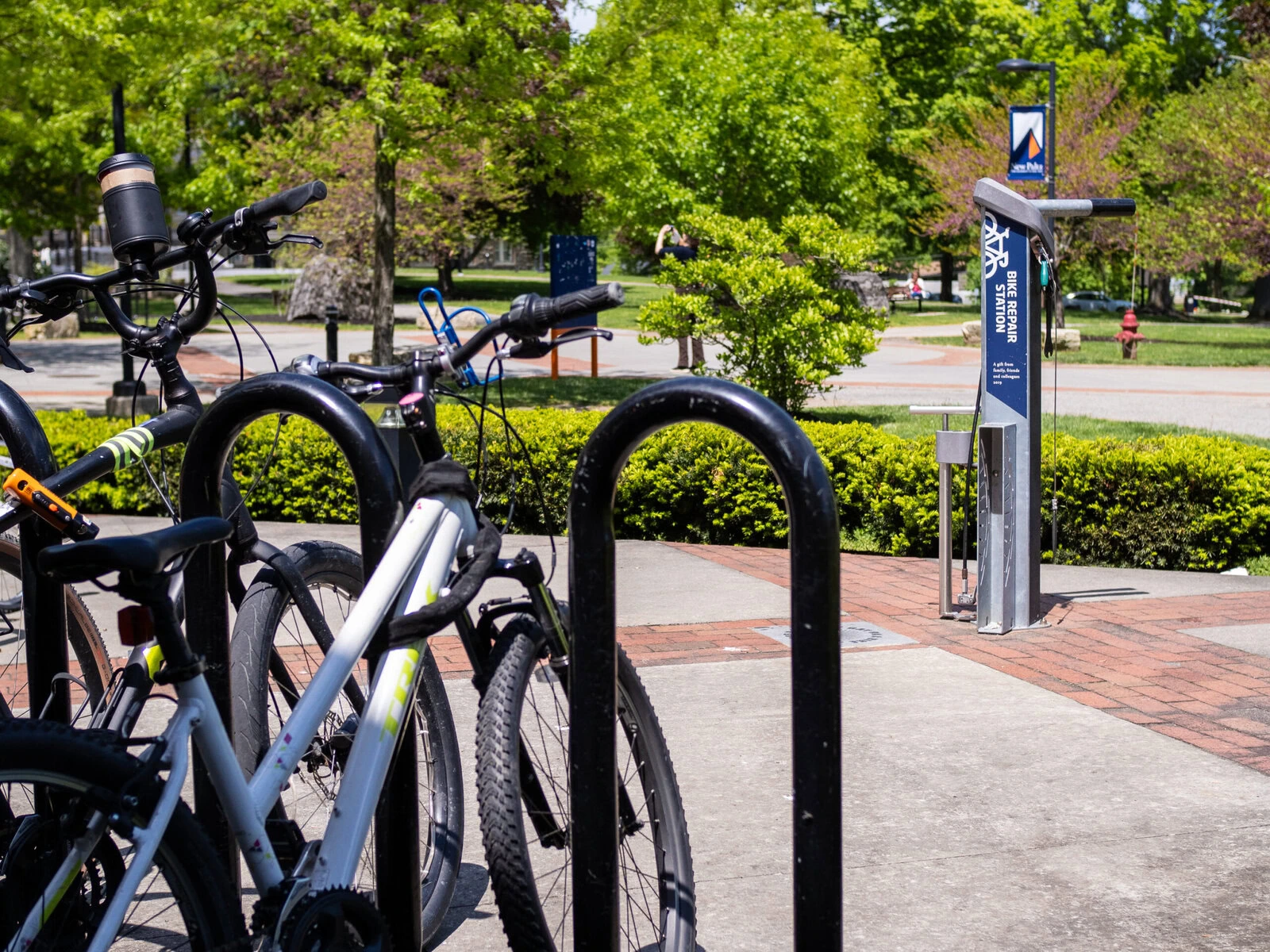
The solar panel team had less drama. Its members interviewed representatives from the New York State Energy Research and Development Authority, Central Hudson Gas & Electric and a local company, Lighthouse Solar, along with Mitten and other campus officials. Often, they met three times a week to research and discuss their proposal, participants said.
Lominski, the senior, plans to enroll this fall in a graduate program at the SUNY College of Environmental Science and Forestry, in Syracuse. Before Sheridan’s class, he said, he had little specific knowledge of how solar panels worked. The course also helped him refine his project management and communication skills, he said.
His solar panel teammate Madeleine Biles, a senior majoring in management, transferred to New Paltz from SUNY Binghamton before her sophomore year because she wanted a school that felt more aligned with her desire to work for a smaller, environmentally minded business.
An avid rock climber whose parents were outdoor educators, she’d developed some financial skills in past business classes, she said, but the exercises had always felt theoretical. This class made those lessons about return on investment and internal rate of return feel concrete. “Before it was just a bunch of formulas where I didn’t know when or why I would ever use them,” she said.
This summer, Biles is interning with the Lake George Land Conservancy, and hopes to eventually carve out a career protecting the environment. While she said she feels fortunate that her hometown of Lake George, in New York’s Adirondack region, isn’t as vulnerable as some places to climate change, the crisis weighs on her.
“I think if I have a career in sustainability, that will be my way of channeling that frustration and sadness and turning it into a positive thing,” she said.
She recently got a taste of what that might feel like: In an email from Sheridan, she learned that her team’s canopy project was chosen to receive the startup funding. The school’s outgoing campus facilities chief signed off on it, and, pending approval from the department’s new leader, the university will begin the process of constructing it.
“It’s cool to know that something I worked on as a school project is actually going to happen,” said Biles. “A lot of students can’t really say that. A lot of projects are kind of like simulations. This one was real life.”
This story about campus sustainability was produced by The Hechinger Report, a nonprofit, independent news organization focused on inequality and innovation in education. Sign up for our higher education newsletter. Listen to our higher education podcast.
The post Colleges Are Becoming ‘Living Labs’ to Combat Climate Change appeared first on Reasons to be Cheerful.




